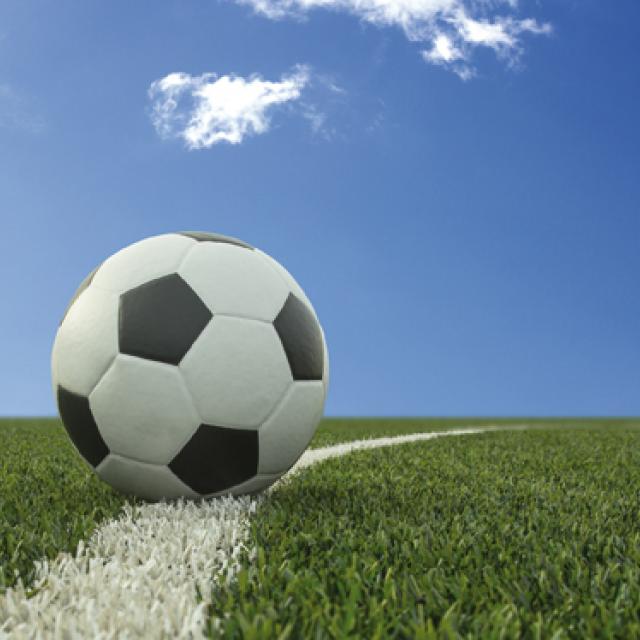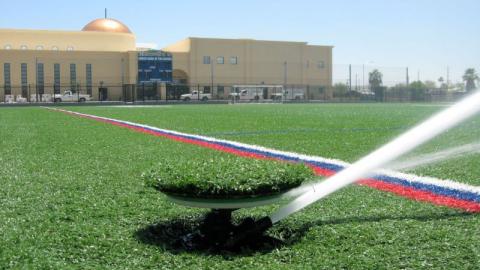Health warning: at a time when there is an increase in the use of sports fields with synthetic surfaces containing recycled rubber, do they represent a health risk for the players? Certain local authorities have expressed their concern.

Render unto Caesar that which is Caesar’s; the magazine “SO Foot” raised the issue last month: the synthetic sports fields, on which young people and those who are not so young aspire to become another Antoine Griezmann, are now treated with suspicion. Entire categories of this type of surface contain products derived from recycled tyres, i.e. synthetic rubber and chemical components, which are not mankind’s best friend. The synthetic fibres that imitate natural grass are not the cause of concern. Rather the crumb-rubber infill that gives the surface its elasticity poses some serious problems because the dust particles released by the material can be harmful. These can come into direct contact with the skin, or even get into the wounds. This is applicable for the footballers and even more so for rugby players, who are increasingly training on synthetic surfaces to escape the rigours and ice and slush of winter. This dust dust can also be inhaled and ingested by the players. And under hot weather conditions, the substance releases a strong smell which is a far cry from the fragrances produced by the perfume industry.
“We cannot deny that the odours can be very unpleasant. The heat is a big problem on synthetic surfaces. And you can also burn the soles of the feet”, commented Arnaud Dugast, founder and director of CoverGarden, a company from the Gironde region, which supplies natural turf to well-established stadiums. It does not install synthetic turf pitches, but rather occupies a niche in the growing hybrid turf market (a combination of natural grass and artificial turf). Its artificial turf used for landscaping does not contain a crumb-rubber infill.
Concerns in the United States
The worrying articles written by our colleague at “SO FOOT” point out that a number of cases of blood cancer have been identified in the United States among the players who are more exposed to the substance, particularly goalkeepers. And this is a real cause for concern given that it has been in common use over the last fifteen years, both in public leisure facilities and private structures used for five-a-side matches. Recently, the Senator for the Gironde region wrote to the sports minister, stating: “When I was mayor of Artigues-près-Bordeaux, the manufacturers vaunted the benefits of artificial grass surfaces, while, at the same time, telling me that the children should wear long-sleeved shirts and trousers (pants) and that the rooms should be well-ventilated. The manufacturers’ recommendations are one thing, but the reality is quite different. I don’t want to suddenly discover that we have a major public health problem on our hands”, she explained. The elected members of the local authorities, such as Nantes or Mérignac (33), are beginning to ask questions. Synthetic surfaces certainly have some advantages, in spite of the higher initial investment cost. “You have to allow 600,000 euros for a large synthetic turf pitch and less than 200,000 euros for natural grass”, estimated Frédéric Gil, sports director for Bordeaux Town Council. However, the maintenance cost is less. There is unlimited playing time while a natural grass pitch will only support eight playing hours per week. “And synthetic turf has replaced the sand and gravel pitches, on which people no longer wish to play because they can injure themselves too easily. They have responded to the specific needs of the local authorities and clubs”, added Arnaud Dugast.
Several generations
While the city of La Rochelle reports that it has not succumbed to the charms of synthetic turf, Bordeaux, for example, has, over the years, installed six five-a-side football pitches and 4 city stadiums using this method. “There are several generations of artificial turf. The crumb rubber in the first-generation capsules was not coated. The next generation had the crumb-rubber encapsulated in sealed granules to prevent foul smells being emitted. With the most recent technologies, natural rubber is used in the capsules. This means that there is no more crushed rubber residue from the tyres being released as dust”, explained Frédéric Gil. According to the mayor, the infill of the city’s synthetic pitches is replaced every 18 to 24 months. And the crumb rubber is encapsulated. This is not necessarily the case everywhere, mainly on account of the cost. However, there are signs that this issue is beginning to weigh on the conscience of some people as the deputy mayors responsible for sports facilities at the municipalities of metropolitan Bordeaux are expected to raise the matter at their next meeting. For all managers of this type of facility, any doubt should be removed and the public duly informed. And this not only applies to synthetic turf sports grounds but also to children’s play areas, for example.
A lack of specific knowledge
Health and Safety agencies: In the course of the coming year, the studies should assess the possible risk posed by surfaces made of recycled tyres.
ANSES, French governmental agency dealing with sanitary safety in food, the environment and at work, is faced with the same dilemma as its counterparts throughout the world: it has to prioritise, no matter whether they are dealing with insecticides or endocrine disruptors or anything else. “The risk assessment team, on its own initiative, decided to look into the dangers associated with the practice of playing sports on artificial surfaces based on recycled tyres. We had begun a preliminary study on the subject in 2014. However, we were forced to focus on other urgent health and safety issues raised by our supervisory authorities. The synthetic turf project was postponed”, replied the health and safety agency, when asked about the state of the science. It is clearly worth the effort because “this study enabled us to conclude that there is a lack of knowledge regarding the composition of these surfaces and the possible level of exposure for the people playing on them. Given the poor quality and quantity of the information available, it has not been possible to conclude whether or not there is a health risk”, continued Anses. The agency emphasised, however, the need to obtain information about the chemical substances discharged by the synthetic turfs and children’s play grounds.
International studies
To summarise, we are unable to say whether synthetic turf sports grounds can pose a health risk. However, we are also unable to confirm that they don’t… Having said that, things are starting to move forward. The European Chemicals Agency (ECHA) is coordinating a study on the subject. All of the 28 member-States must send in their information for a forthcoming synthesis report. For a number of years, Europe has been monitoring the progress of the American scientists. This is not surprising if we consider that synthetic turf appeared on the scene far earlier across the other side of the Atlantic. Two years ago, the US Environmental Protection Agency (EPA) launched a research study into the health risks linked to the use of recycled tyre crumb. All of the countries public health bodies and institutes took part in the project. In theory, they will be publishing a report very soon on the results of the research.

